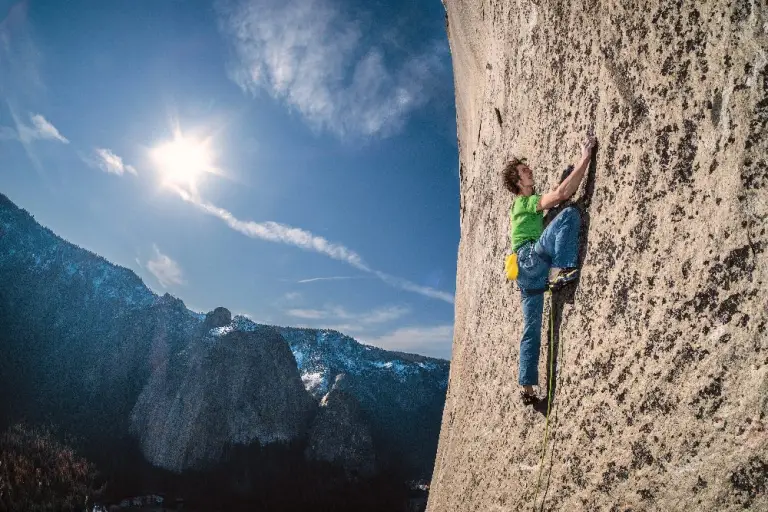Standing Through the Centuries: The Majestic Grizzly Giant of Yosemite
Nestled in the heart of Yosemite National Park, the Grizzly Giant is one of nature’s most remarkable treasures—towering at a stunning 209 feet (63.7 m) and boasting an age estimated at around 2,700 years (if not older). As the second-largest giant sequoia in Yosemite, this awe-inspiring tree has silently witnessed the march of time, from the days before the Roman Republic to our modern world of high-speed internet. With its colossal presence and storied history, it’s no wonder the Grizzly Giant is often considered one of the most photographed trees in the park.

A Glimpse into Ancient Times
To truly appreciate the Grizzly Giant, it helps to understand just how far back its lifetime stretches. When this tree first took root, the Roman Republic was still two centuries away from being established, Buddhism was yet to emerge, and the famous Nazca Lines of Peru wouldn’t be etched into the Earth for another 200 years. Standing before the Grizzly Giant can evoke a humbling sense of time travel, as it has borne witness to millennia of human history unfolding around the globe.

A Living Monument to Natural Resilience
Giant sequoias (Sequoiadendron giganteum) are renowned for their incredible longevity, and the Grizzly Giant is no exception. These trees thrive in the Sierra Nevada region, adapting over the centuries to withstand environmental challenges that might topple other species. One of their remarkable features is their thick, insulating bark, which can be up to two feet thick and helps protect the trees from the destructive effects of forest fires. Instead of annihilating these giants, the periodic fires naturally clear competing vegetation and help release sequoia seeds from their cones.
This resilience is a testament to evolutionary brilliance—giant sequoias have developed an interdependent relationship with fire. When flames burn through the underbrush, the heat aids in opening their cones, allowing seeds to fall into nutrient-rich ash. This cycle helps ensure the next generation of sequoias can germinate with minimal competition.
The Grizzly Giant Through the Years
One of the most iconic photographs of the Grizzly Giant was taken in 1900, featuring U.S. cavalry soldiers at its base. The juxtaposition of these uniformed guardians of the park’s earliest conservation efforts and the towering sequoia highlights both the tree’s immense scale and the enduring human fascination with these “living monuments.”

Today, thousands of visitors flock to Yosemite to stand under the same branches those soldiers once stood beneath. The Grizzly Giant, still thriving and very much alive, captivates onlookers with its colossal girth and weathered bark, each scar and notch telling a chapter of its story. The branches themselves can be several feet in diameter, forming an imposing canopy that provides shelter to birds and small woodland creatures.
Preserving a Natural Legacy
Standing in the Mariposa Grove of Giant Sequoias, the Grizzly Giant remains a potent symbol of nature’s grandeur and the importance of protecting our wild spaces. Yosemite National Park has long championed conservation, and ongoing efforts aim to maintain healthy forest conditions that support the survival of these magnificent giants for centuries to come.
Preservation involves controlled burns, careful management of undergrowth, and scientific research. By monitoring the health of these ancient trees and restoring the forest’s natural fire cycles, park officials help ensure the sequoias remain resilient in the face of climate change, droughts, and increased visitor activity.
Visiting the Grizzly Giant
If you’re planning a trip to Yosemite National Park, the Mariposa Grove should be high on your itinerary. Here, boardwalks and marked trails make it easy to admire not only the Grizzly Giant but also several other venerable sequoias. Each tree has its own distinct character and shape, offering visitors a chance to marvel at living towers that have stood through countless generations.

Travel Tips:
- Timing: Try visiting early in the morning or late in the afternoon to avoid peak crowds. The softer light of sunrise or sunset also makes for exquisite photographs.
- Respect Wildlife: Giant sequoias share their environment with a host of other species. Observe posted signs and regulations to protect this delicate habitat.
- Stay on Marked Trails: Remaining on designated pathways helps reduce soil compaction and root damage.
- Check Park Alerts: Before arriving, review the latest information on weather conditions, prescribed burns, or trail closures.
A Giant that Connects Past, Present, and Future
The Grizzly Giant stands as a living bridge across millennia. Its monumental height, massive trunk, and incredible lifespan are living reminders of Earth’s capacity for growth, change, and resilience. When you stand in the shadow of this ancient titan, it’s impossible not to feel a sense of awe and respect for the forces that shaped our planet’s natural wonders.

In a world that seems to move faster every day, taking a moment to connect with something that has endured for nearly three millennia can provide much-needed perspective—and a profound reminder of how precious our ancient forests truly are.





